
The expedition, consisting of Rubryka's journalist, a photographer, and Volodymyr Boreyko, a Ukrainian environmentalist, public figure, and head of the Kyiv Ecological and Cultural Center (KECC), went on a walking tour through the forest near the village of Linechchyna in the Vinnytsia region. They aimed to find snowdrops and wild leek, and, according to Boreyko, their chances were rather good. Five to ten meters into the forest they encountered a big meadow of wild leek.
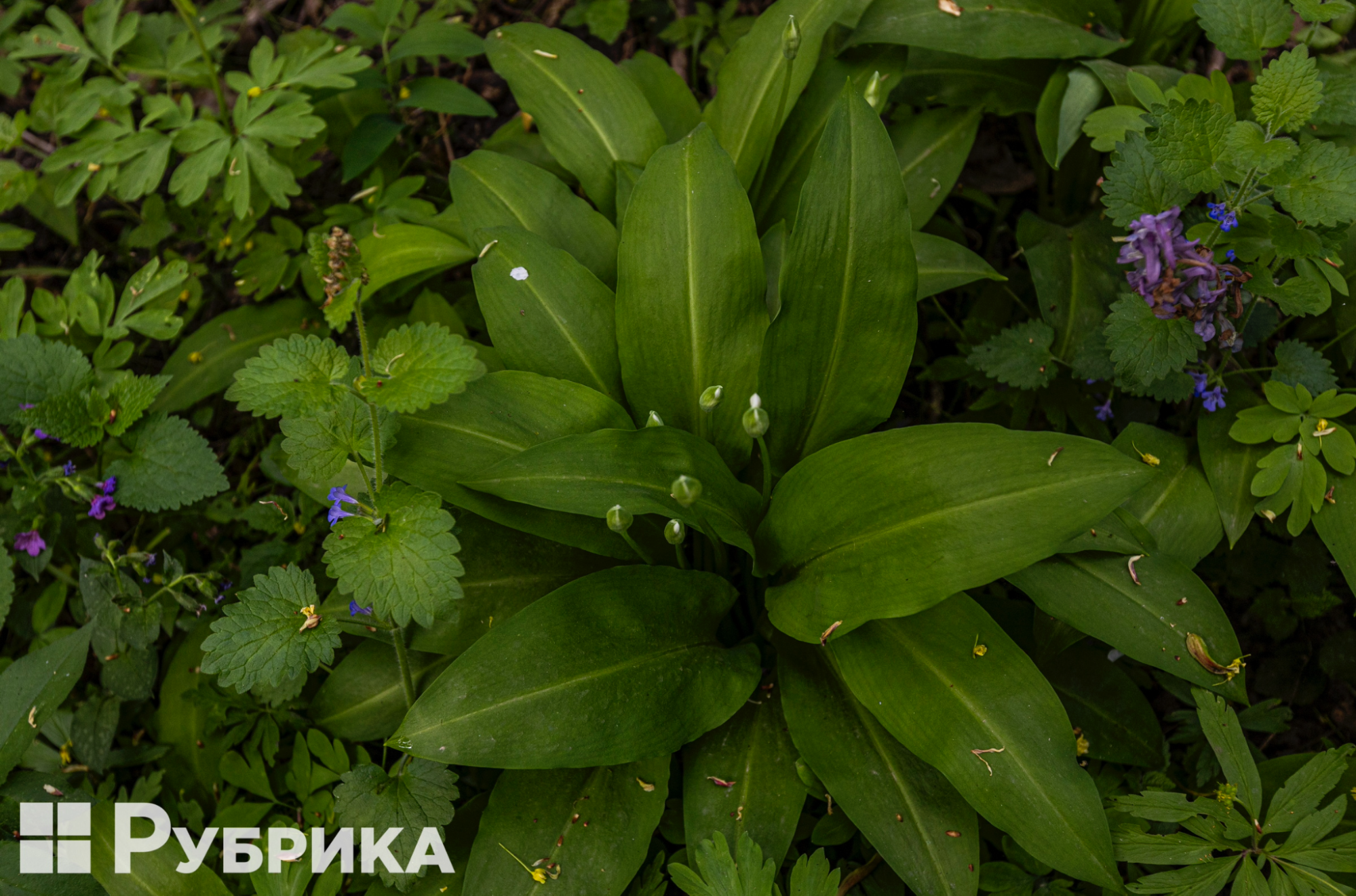
"Snowdrops and wild leek are best friends," says Boreyko, walking among the plants. "They always grow together," and almost immediately after this phrase, the group sees snowdrops huddled together on at least ten square meters. This is an untouched forest area — there has been no felling here for decades, so there are plenty of snowdrops and wild leek.
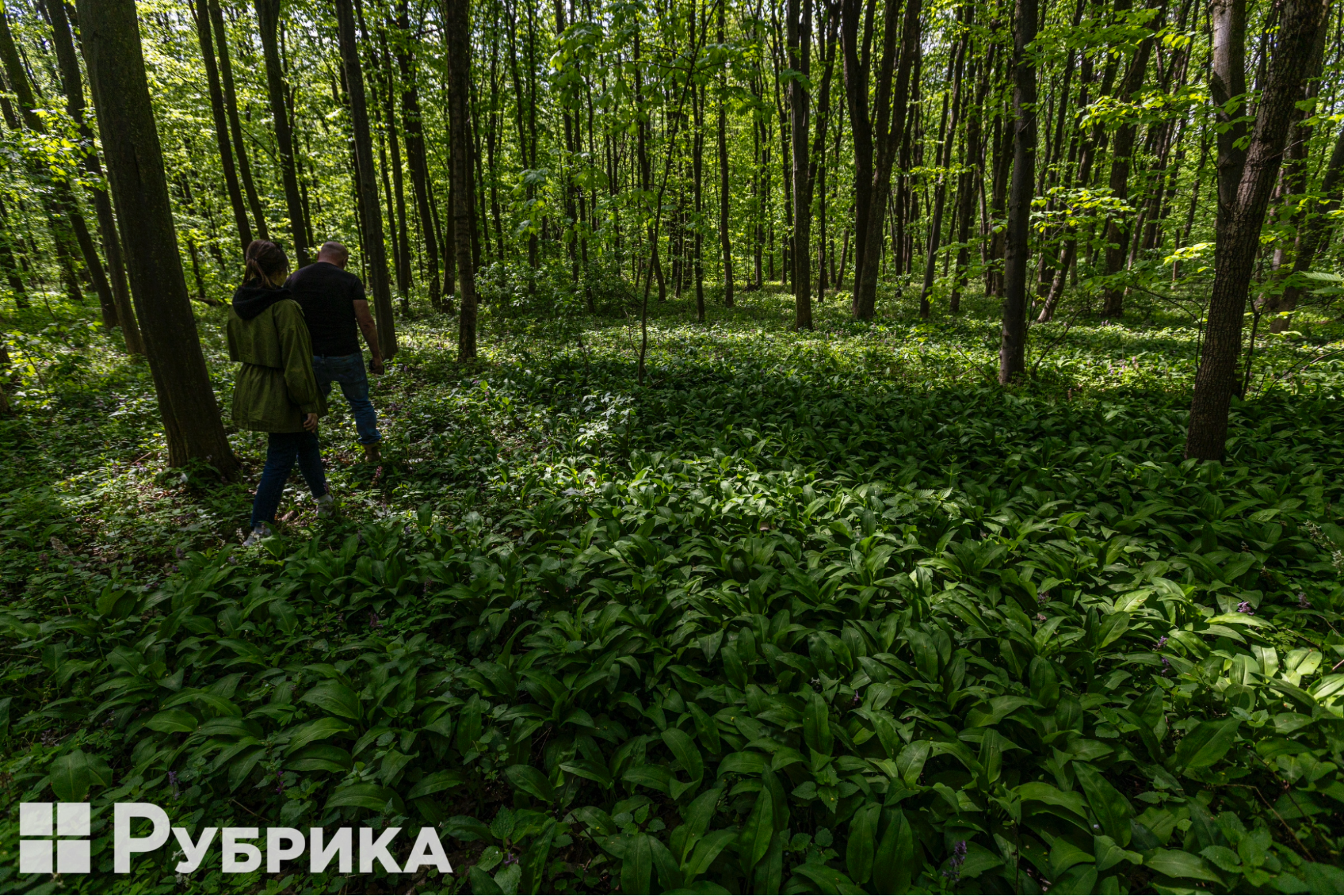
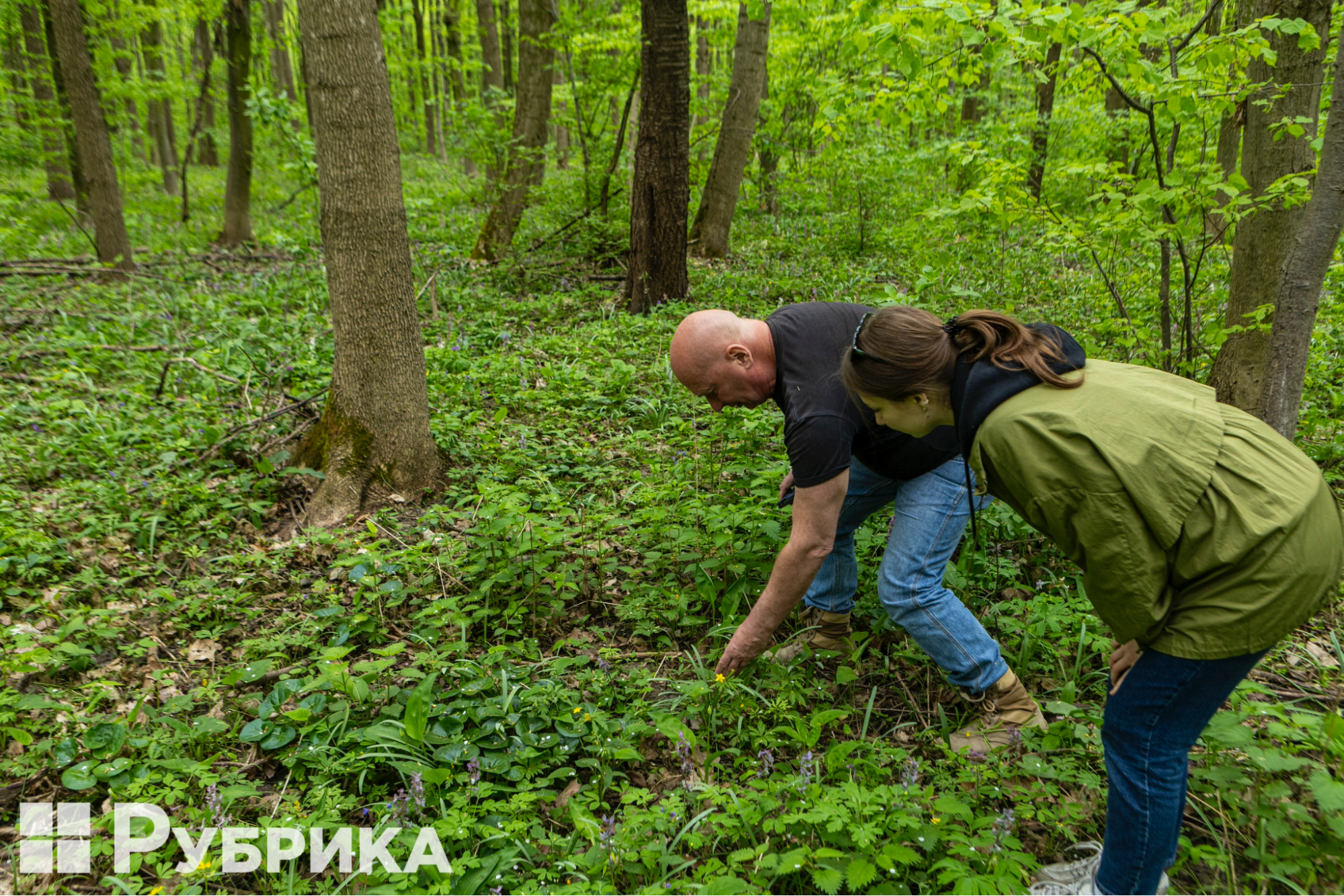
Volodymyr Boreyko and Rubryka journalist Viktoriia Hubareva investigate a forest plot.
Boreyko takes out a tape measure to determine the density of plants. He measures the square and counts the number of snowdrops and wild leek growing on it. On one square meter of an almost untouched forest, 64 units of wild leek and 32 snowdrops grow.
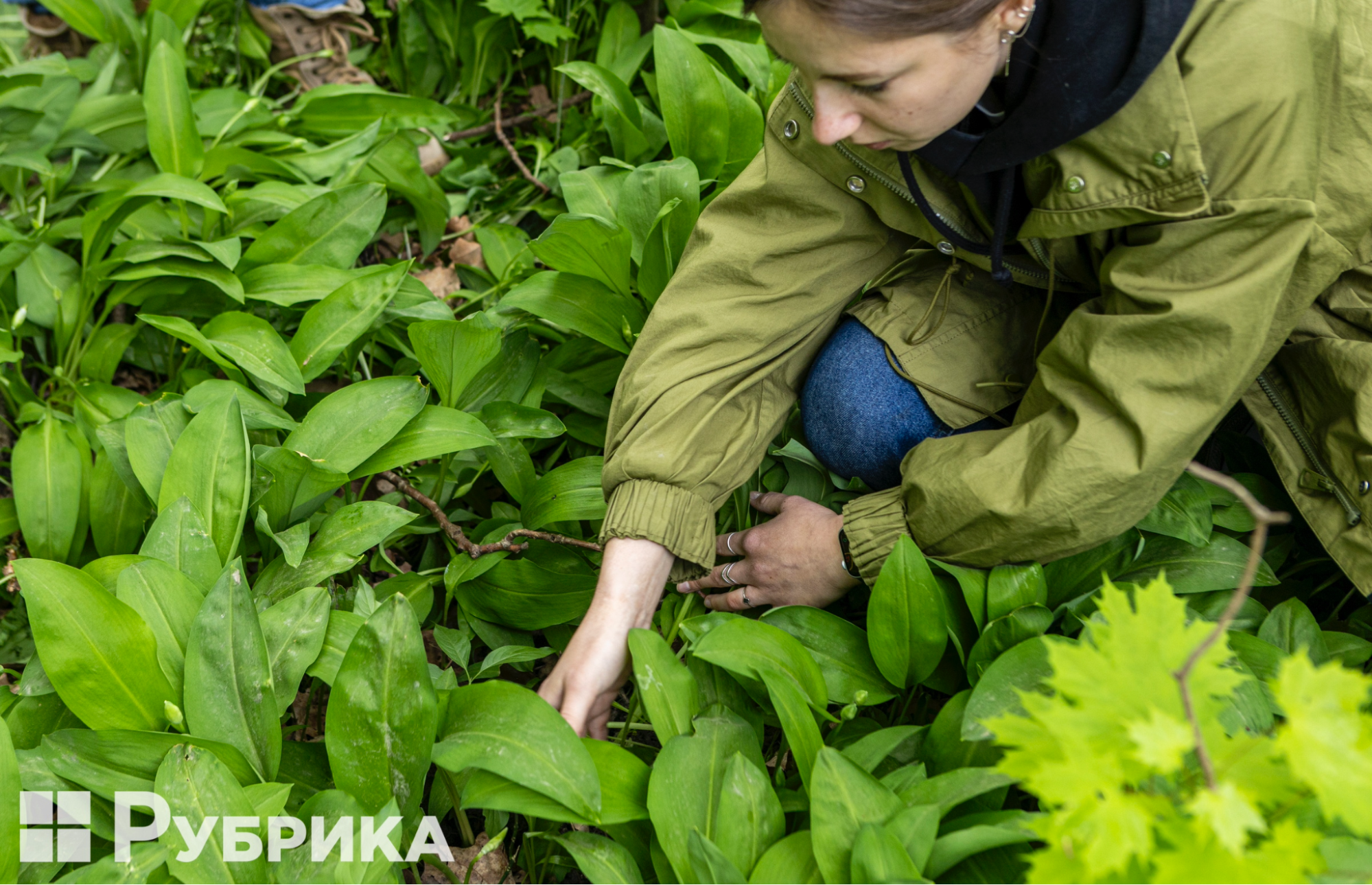
Counting wild leek.
Both plants have nature conservation status and are listed in the Red Book of Ukraine, which encompasses endangered species. The presence of endangered species allows territories to be given nature protection status and to defend forests against felling.
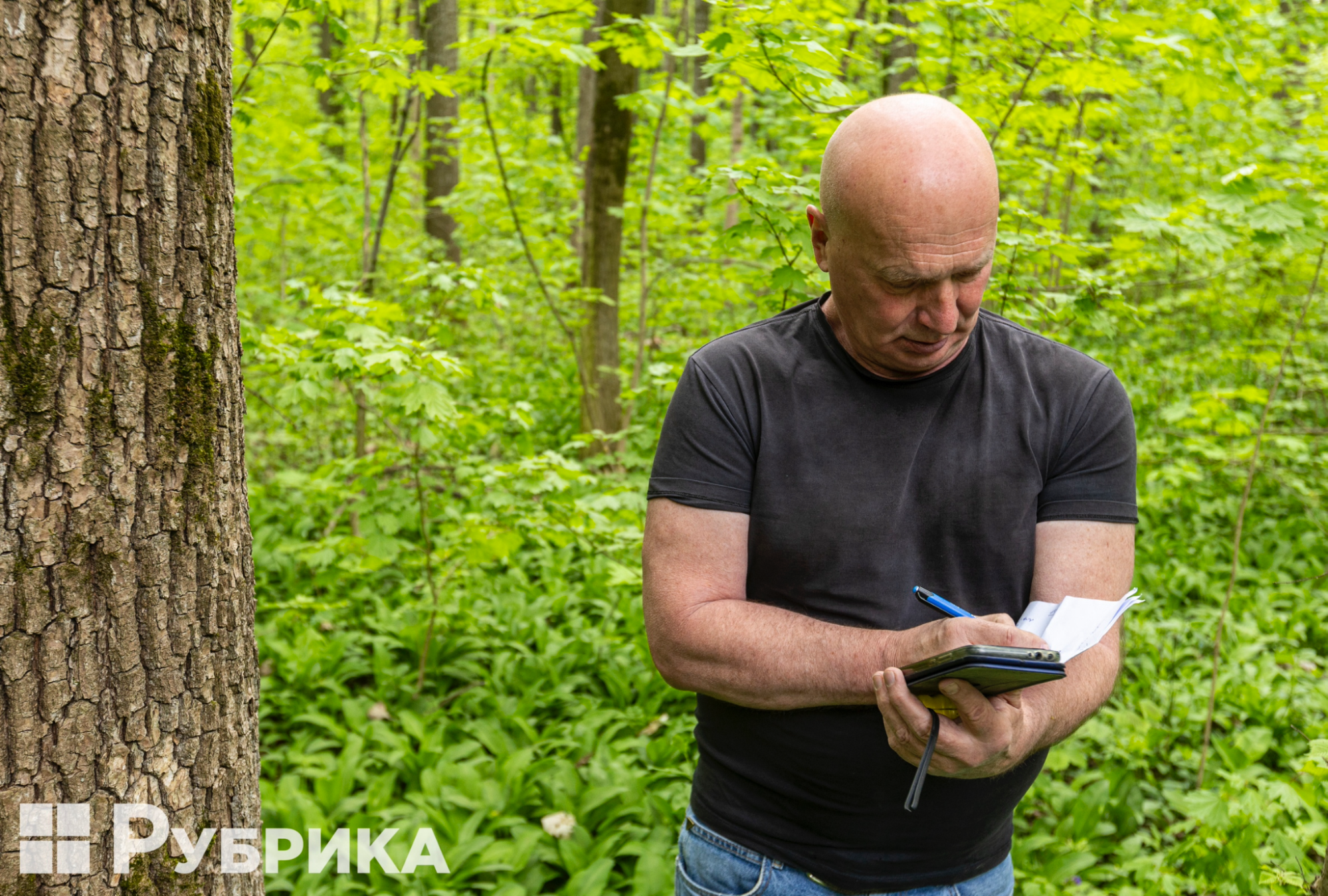
Volodymyr Boreyko notes down the calculations.
The expedition's purpose is to find a reason to reserve these forests. Snowdrops and wild leek have been found, so the reservation process is about to begin. However, it will not be possible to save all areas. Unfortunately, even selective felling, when only individual trees are removed from the forest, not entire squares, decreases biodiversity hundreds of times.
What is the problem?
The same forest, but with felling
The meadow covered with wild leek and snowdrops remains behind. The expedition moves to a conditionally different part of the forest, which, at first glance, is no different from the one behind. However, Boreyko draws everyone's attention to a pile of branches, stumps with even cuts, and, most importantly, to the fact that there are neither wild leek nor snowdrops. There are still trees here, but the forest seems a little poorer and more transparent.
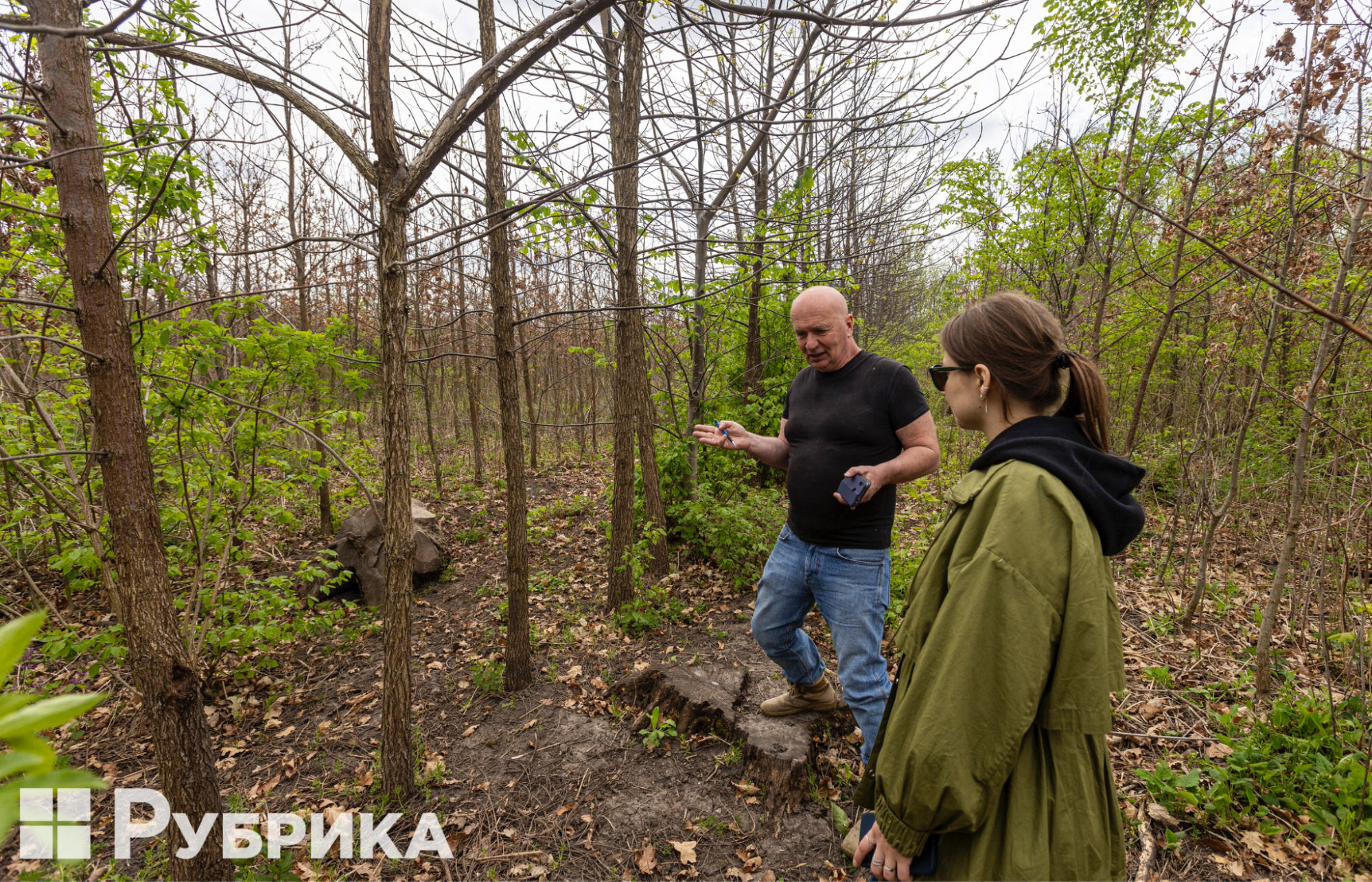
A section of the same forest where felling was carried out. Once upon a time, the trees here were tall — now only stubby stumps remind of it.
"There was a selective felling here a few years ago," Boreyko sums up and explains why the forest areas differ so much. When selective felling is carried out, from the point of view of preserving biodiversity, it is not much better than complete felling. First, heavy machinery drives into the forest, and trees are felled and then dragged through the soil. This damages the roots of the plants, and they have much less chance of survival.
Firstly, the microclimate changes. In the previous area, where there were plenty of wild leek and snowdrops, there was a thick shadow, the humidity of the air was good, and where the forest was selectively felled, it was lighter and hotter. Such conditions are no longer suitable for fragile snowdrops or wild leek.
Secondly, more hardy plants populate damaged areas of the soil faster, and snowdrops and leek with damaged roots simply die in most cases.
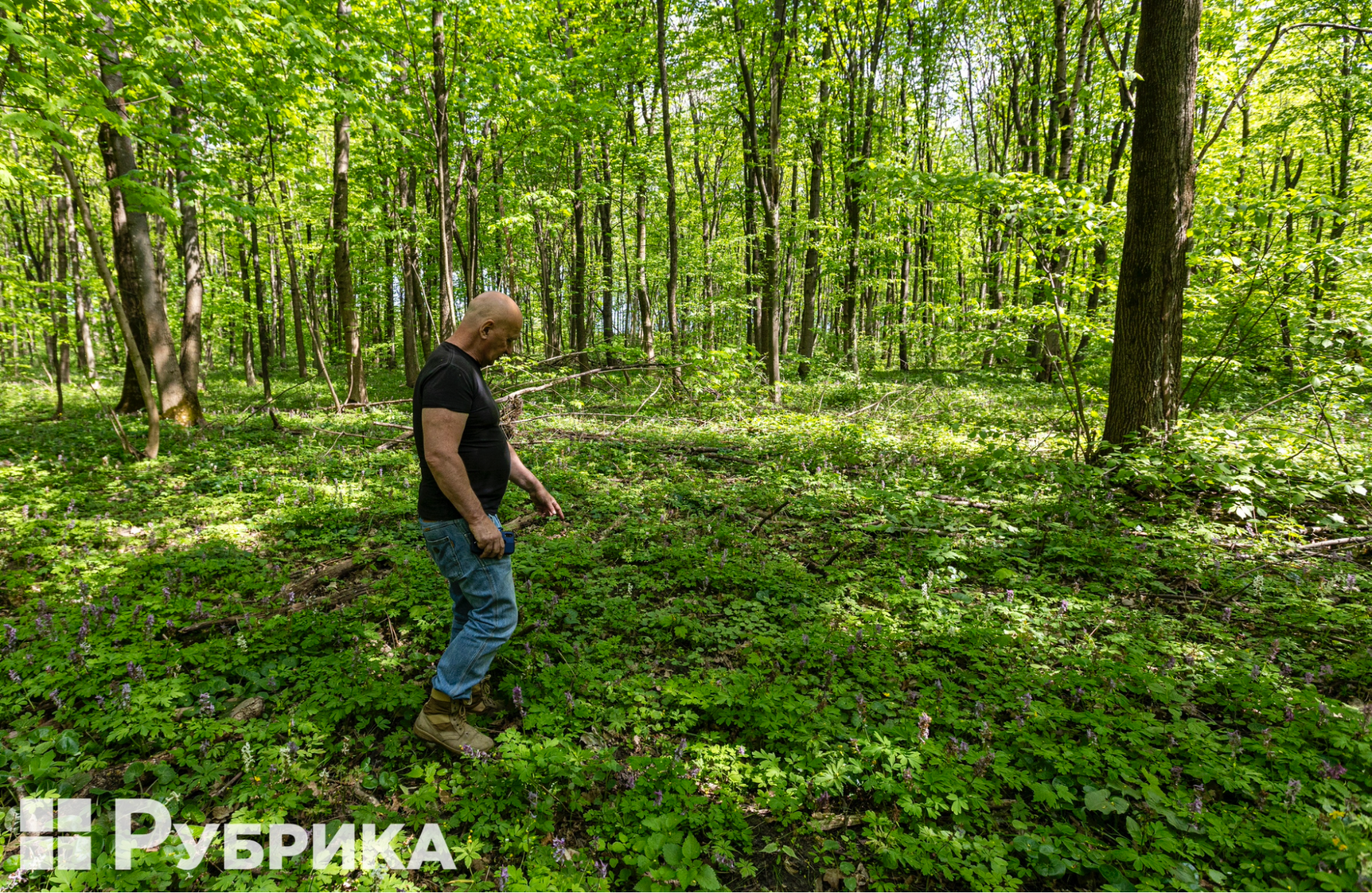
The forest area where selective felling once took place looks more transparent. There are absolutely no endangered plants there.
Boreyko took out the ruler again, but there was nothing to count here. According to Boreyko, forest felling harms the habitats of 148 endangered species of flora, or almost 20% of all plants and mushrooms listed in the Red Book of Ukraine.
A few tens of meters away, there was an area where a complete felling was once carried out. The soil here was not just damaged by machinery — it was dug up for new afforestation. Now, young birches reach about three meters. It is hot in the area, and a pile of dust rises from the almost bare ground without vegetation. The density of leek here is 640 times lower than in the first untouched area. The new plot is more like a garden bed, where the trees are the product of foresters and are by no means a natural forest.
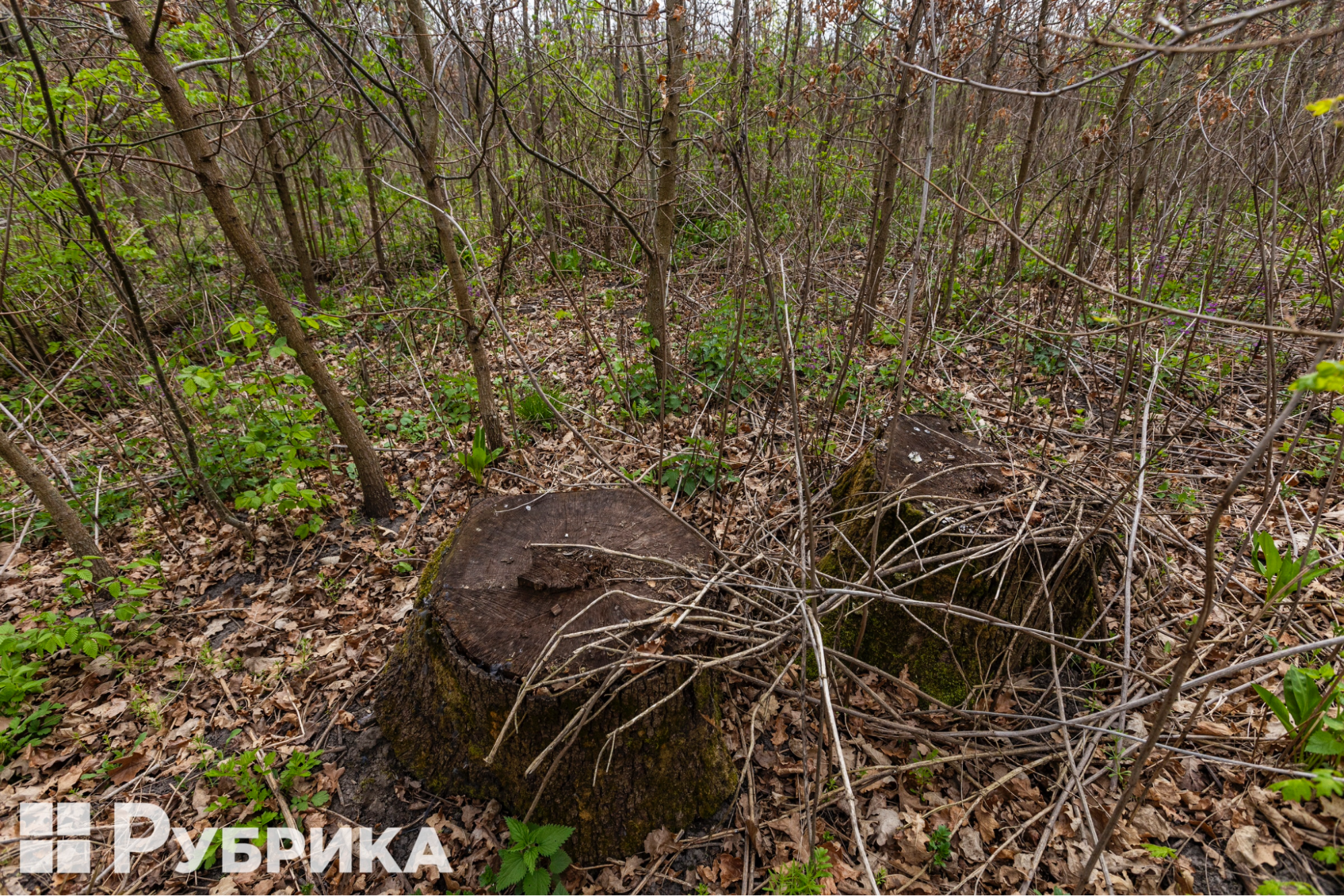
What does legislation say?
Ukraine has legislation to protect endangered species from foresters — logging in endangered plants and bird habitats is prohibited.
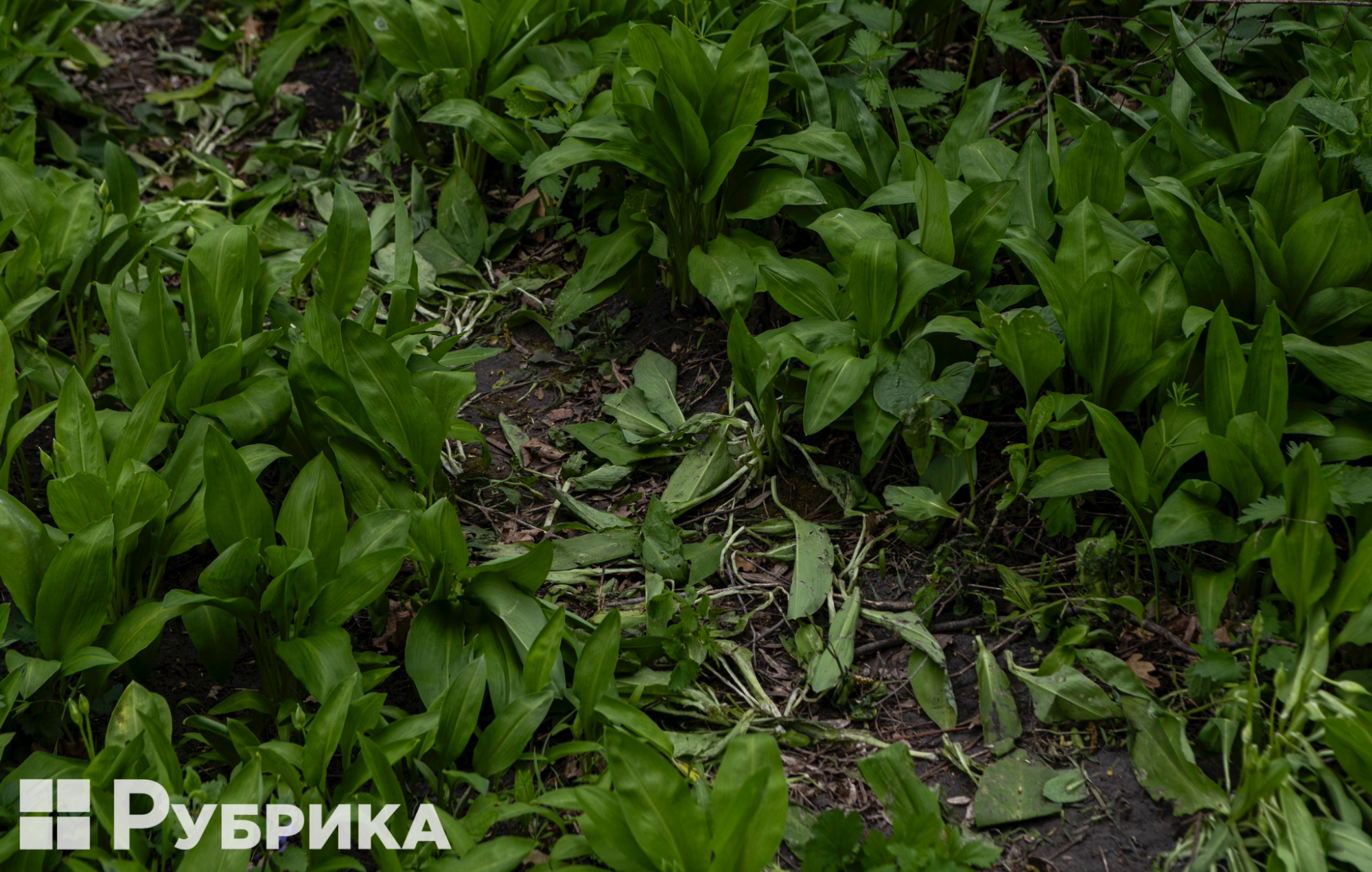
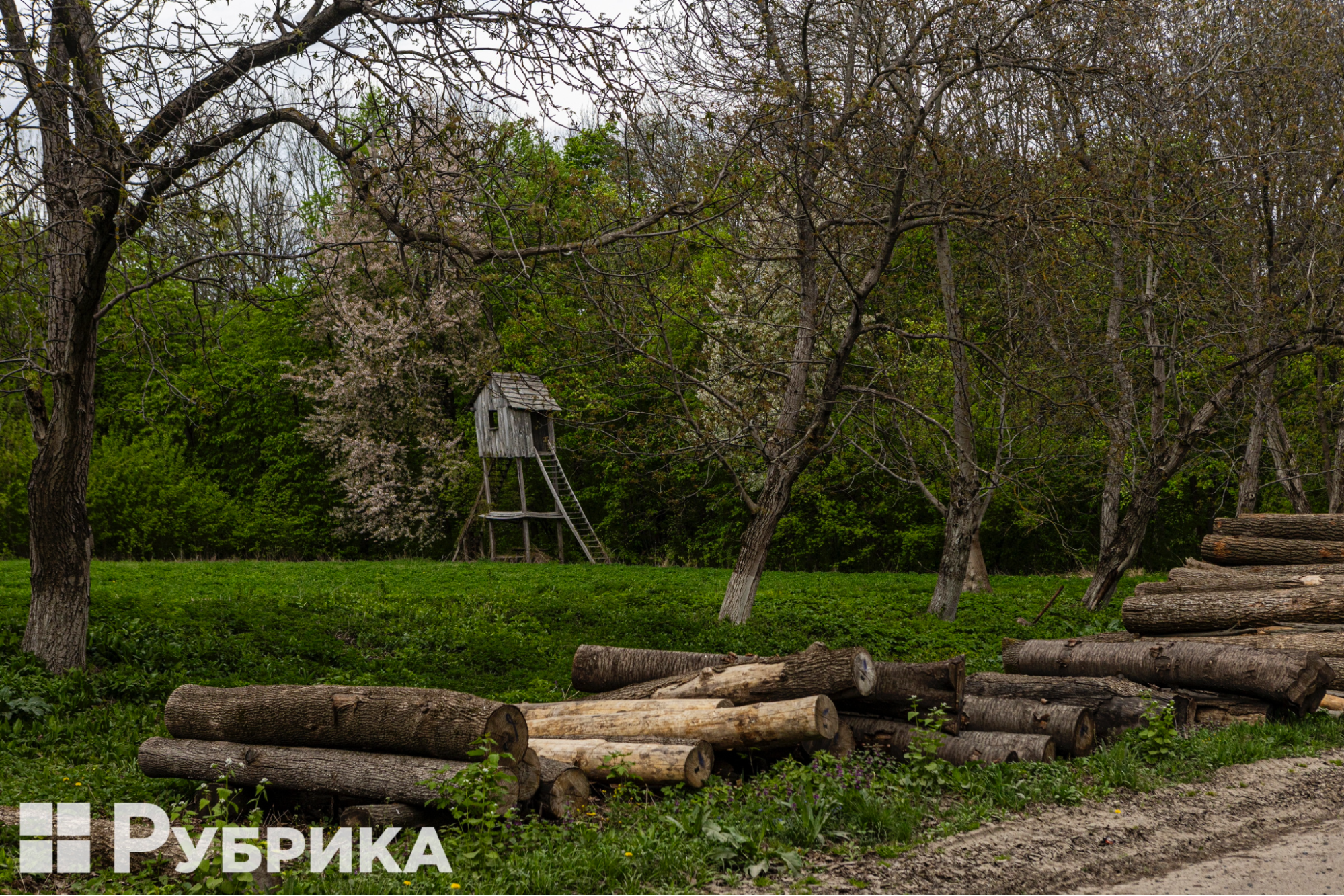
In the same forestry, where oaks and cherry trees are neatly arranged by the road, there is a tower for hunting animals — it differs from the birdwatching tower in that it is closed from almost all sides. Here there are feeders for moose with salt.
"Forestries feed forest animals not because they love and care for them very much. It's bait," Boreyko explains. The animals come for feeding at the same time, and the hunters come here shortly before the animals arrive.
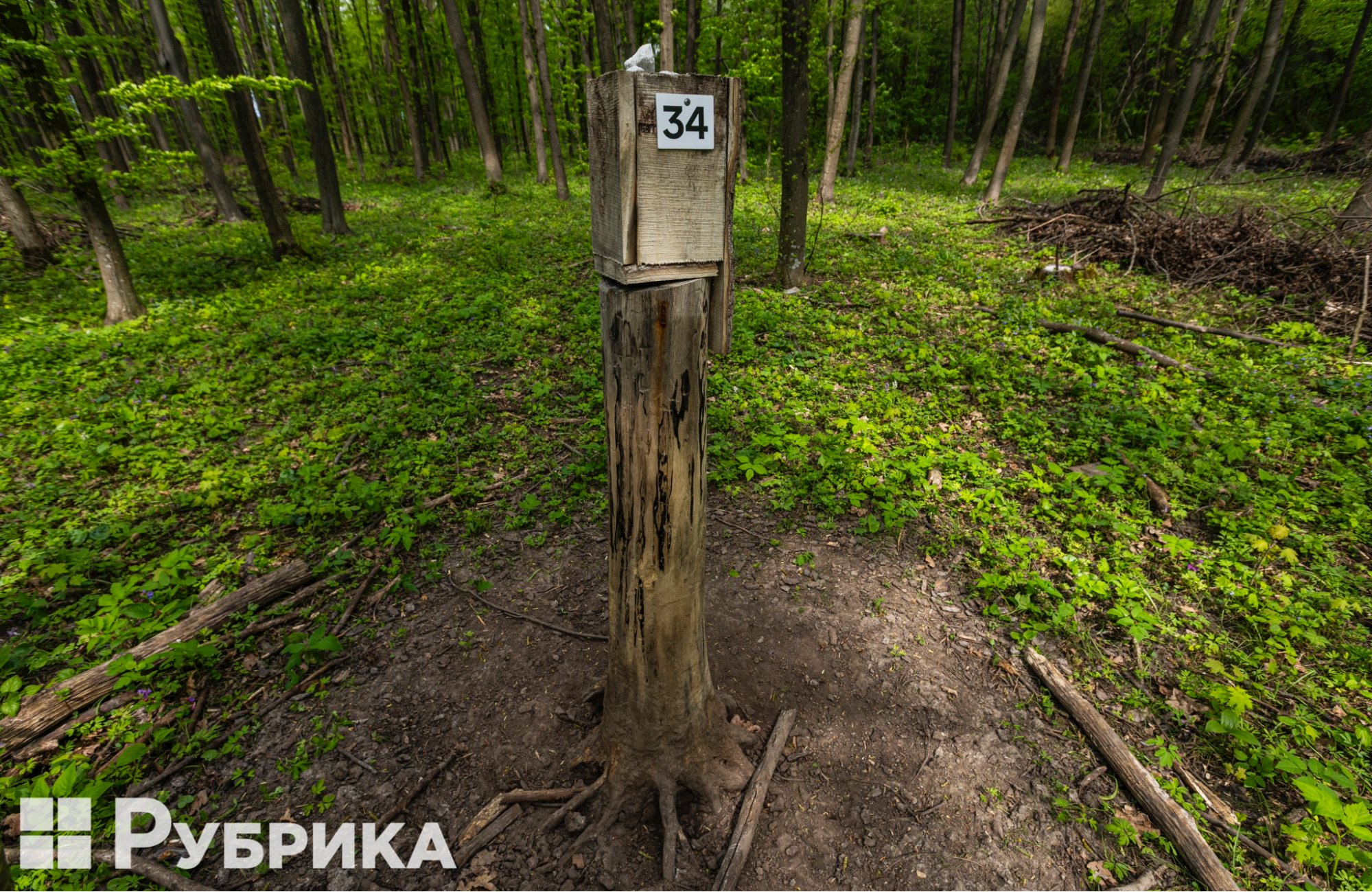
A new dirt road leads to the feeders. It seems that it was recently driven by a car for the first time, but here's the problem — it was all covered with an endangered cherry tree, which was crushed under the tread of the equipment and, most likely, will definitely never bloom again. Boreyko counts the density of plants on this section of the road and lists 280 damaged plants.
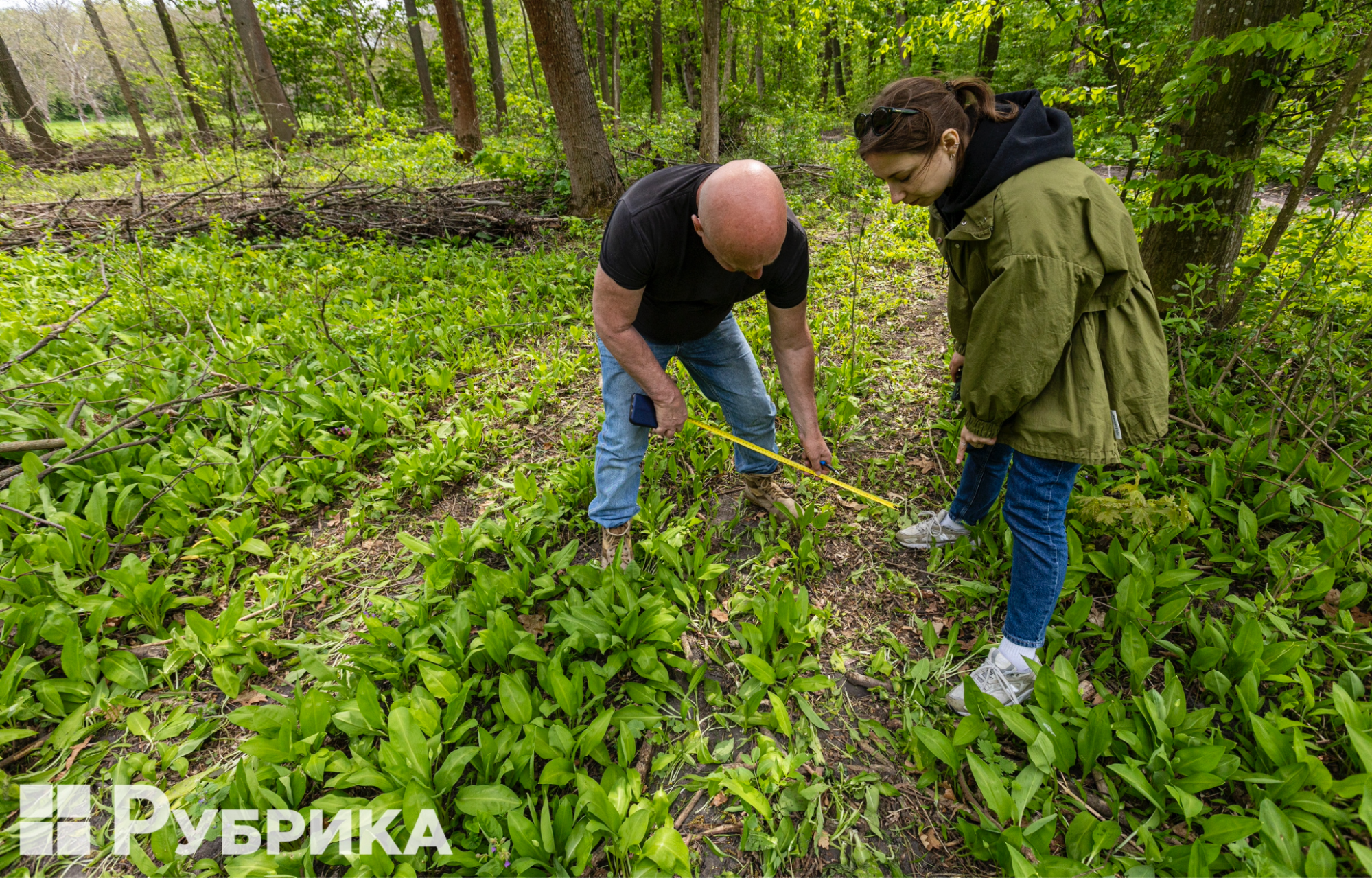
What is the solution?
To preserve biodiversity, it is necessary to preserve territories
Territories where endangered species have been recorded must be protected by law. The initiative almost never comes from the state, but fortunately, environmental protection non-governmental organizations come to help. They draw up a justification and submit it to the Ministry of Ecology, after which the owners and land users agree upon the reservation.
Regarding forests, the state enterprise Forests of Ukraine is the main opponent of bequeathing its territories. For them, giving a territory a protected status almost always means a ban on logging, so the company does not want to lose its own source of income.
The Kyiv Ecological and Cultural Center chose a different strategy. First, get consent from the owners and users, and only then contact the ministry. Each individual case is resolved through negotiations. Sometimes, in order to take some territories into the conservation fund, it is necessary to agree on the removal of others — those that, in fact, no longer have any value for the preservation of biodiversity.
This method works—thanks to the KECC, about 40 protected objects appear annually. In 2023, the Kyiv region accounted for ⅔ of all new protected areas in the entire country.







